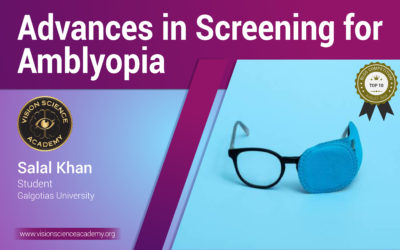VSA BLOGS
A Practical Blog for Professionals
Advances in Screening for Amblyopia
Salal Khan, M.Optom Student, Galgotias University, U.P, India Introduction Amblyopia is the most common cause of monocular visual impairment in children, with a prevalence of 2–3%. Not only is one eye's visual acuity reduced, but also binocular vision, fellow...
Cognitive Science and Artificial Intelligence: “The ongoing trend”
Pritam Dutta, M.Optom, FAAO Chandraprabha Eye Hospital, Assam, India Background The term "cognitive science" today refers to the study of all aspects of the mind and encompasses a wide range of academic disciplines such as linguistics, anthropology, artificial...
Vision Science of Motion Sickness
Viraj Zambaulicar, M.Optom Student, The Sankara Nethralaya Academy (TSNA), Chennai, India Background Motion sickness may ruin a much-anticipated vacation and in rare instances affect activities of daily living or employment requiring travel. Although it can...
World Sight Day: Love your Eyes!
Dr. Abhishek Mandal, Ph.D. Senior Business Adviser, Vision Science Academy, London, U.K. Vision Science Academy Exclusive There are a few notable challenges which need an annual reminder for the countries worldwide to concentrate their efforts on devising...
Effect of Environmental Factors on Angle Closure Glaucoma
Vidushi Gupta, B. Optom Optometrist, Dr. shroff’s Charity Eye Hospital, New Delhi, India Keywords: Environmental factors, sunspot, glaucoma, stress, glaucoma in stress, glaucoma & temperature. Glaucoma is a broad category of ocular disorders that all end...
Cortical Blindness: Loss of Vision Without Any Ophthalmological Cause
Swati Jha, B. Optom Optometrist, Dr. R.P.C. AIIMS, New Delhi Cortical blindness is defined as the partial or total loss of vision because of lesion in brain. It is a permanent loss of vision following damage to the primary visual cortex or retrogeniculate...






